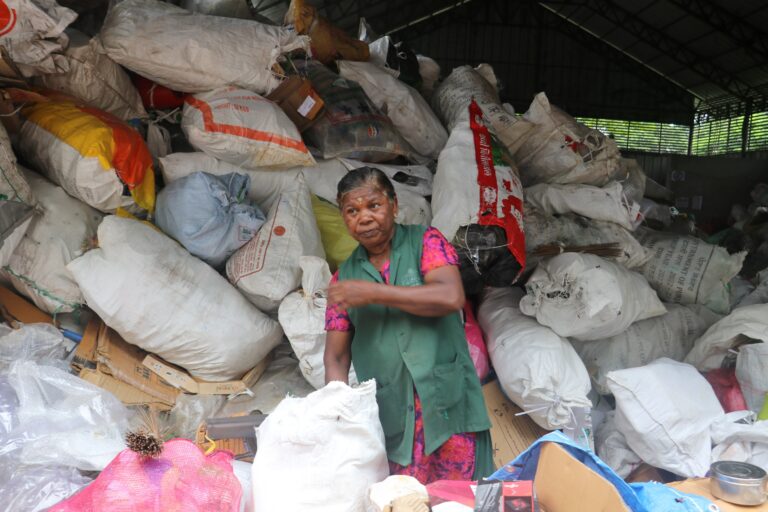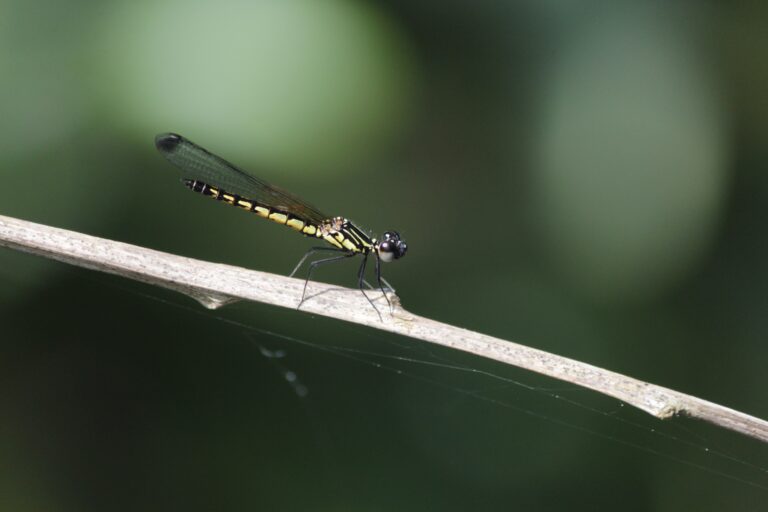- The forests in Jammu and Kashmir have suffered much damage in the recent decades due to increase in construction, armed conflict and political turmoil.
- During the years of heavy conflict, timber smugglers and forest officials were at loggerheads, resulting in the death of many officials. Now, the forest department is proactive in booking smugglers, some of whom have changed their ways realising the environmental damage of their activities.
- There is promise with new nurseries growing seedlings that can become forests in future.
When Kashmiris talk about the significance of forests, they instantly refer to one of the most popular sayings of the 15th Century Kashmiri saint and poet, Sheikh ul Alam: “Ann Poshi Teli Yeli Wan Poshi” (food will last as long as forests last). Kashmir’s evergreen coniferous forests and snow covered peaks have a direct bearing on the region’s agriculture, energy and tourism industries as its beautiful lakes, rivers, agricultural plains and meadows owe their existence and economic production to the forests.
Every year, Sheikh ul Alam’s saintly advice about these ecological assets reverberates across the region with speakers at thousands of schools, colleges and public gatherings referring to the importance of forests without missing out on quoting the famous saint on such occasions as World Water Day, Earth Day and World Environment Day.
Yet, forests in Kashmir have suffered extensive damage in the recent decades. This is particularly because of a construction boom amidst the armed conflict and political turmoil prevailing in the region over the past three decades.

According to the Jammu and Kashmir State Forest Policy-2010, the “past few decades have witnessed exponential increase in human and livestock population, rapid industrialisation, and a spurt in developmental activities.” These developmental processes, says the document, have resulted in loss of forest area accompanied by an overall degradation of forest vegetation and forest soils.
The effects of degradation of forests, the document says, are already visible in drying up of perennial water sources at many places, accelerated soil erosion, flash floods, silting up of reservoirs, loss of biodiversity and reduced forest productivity.
Much of the damage to Kashmir’s forests has occurred during the years of intense armed conflict for over a decade since 1990.
Official records at Jammu and Kashmir’s forest department reveal that as many as 79 forest officials including one conservator have lost their lives while trying to protect the forest wealth, whereas 135 forest buildings have gotten destroyed as a fallout of the armed conflict. Besides, there have been hundreds of incidents of forest officials getting beaten up by smugglers as also by government forces and militants, forest officials said.
With such a fear psychosis prevailing in the region when the armed conflict was at its peak, strict laws under the Jammu and Kashmir Forest Act could hardly be enforced. In the meanwhile, timber started increasingly becoming sought-after as compared to the years before 1990, given the huge improvement in economic status of people.
However, since 2003, when the conflict situation started to improve, thousands of cases have been filed against timber smugglers including hundreds of smugglers booked under Public Safety Act , a law under which a person can be detained for up to two years without any trial. For example, from 2014 to 2017, forest department has registered as many as 1,301 cases in police stations and courts against 4,206 culprits.
Forest officials said that more people could have been booked under law, but the department lacks human resources. Even today, the forest department has a deficiency of 575 officials including 399 forest guards and 153 foresters as per the official data. Corruption charges have also been leveled against some forest officials for condoning the smuggling of timber from various areas of Kashmir.

Smugglers turn over a new leaf
Quoting statistics from one of his recent studies, Mohammad Sultan Bhat, head of Kashmir University’s Geography Department, said that area under dense forests around the tourist resort of Pahalgam in southern Kashmir fell by 191 square km from 1961 to 2010 with an average annual loss of 3.9 square km, largely due to illegal construction over forested areas.
“Sparser forest areas did not fare so badly over the studied period, until recently. From 2001 to 2010, even they decreased in size by nearly 10 percent a year,” Bhat said. “This could be attributed to the fact that the dense forests were initially changed into sparse forests and in the later stage these sparse patches were utilised for agriculture and residential purposes.”
If good sense had not dawned upon the timber smugglers of Sitharan area of central Kashmir’s Budgam district, they would have stripped their forest bare. “Over half a million full-grown trees were cut down in this area from 1990 to 2010,” admitted Javid Ahmad a former timber smuggler of Budgam. These were the years when armed violence reigned supreme across Kashmir valley.
Mohammad Ramzan, who is in his 60s, recalled that there used to be dense forests some two decades before, but there are hardly any trees left now. “Look at those denuded areas,” Ramzan said while pointing towards the nearby stripped forest areas such as Krala Sangri, Ramunhar, Pareezapan, Zam Pathar and Baerbal Damdam.
“I remember, every day timber was loaded upon over 1,000 horses for carrying it to saw mills,” he added. “Even the army officers would take their own share of the loot when smugglers would come in contact with them.”
It was in year 2010 when the timber smugglers of Sitharan and adjoining areas in Budgam began to realise that their two-decade career was not sustainable. But they did not know of any other way to make a living in this part of the Pir Panjal range in the Himalayas.
What changed their mind, was the rash of criminal cases filed against them in recent years when the security situation started improving, and also the idea of selling the charms of “our beautiful surroundings to tourists.” Now, more people are trying to focus on tourism though locals said that some people still try to earn out of timber trade. Such types of forest degradation have taken place in almost all parts of Kashmir.

On the path of recovery?
As per the Forest Survey of India’s (FSI) 2017 report, forest cover in Jammu & Kashmir has increased with a net gain of 253 square km, as compared to the forest cover in 2015 as presented in the FSI 2015 report.
But, Akhlaq Wani, an assistant professor of Natural Resource Management in Srinagar’s Sher-e-Kashmir University of Agricultural Sciences and Technology (SKUAST) says that out of 253 square km increase in forest area, a significant figure of 245 square km has come from outside Line of Control (LOC), which divides parts of Kashmir under India’s and Pakistan’s control.
Hence, Wani observes, it can be inferred that there has been a net increase of only eight square km of forest cover if figures across LOC are kept out.
“Also, lot of this forest cover comprises of trees outside forests in several districts of Kashmir valley where lots of orchard trees, poplars and willows have been planted in recent years,” Wani said.
Under such circumstances, he says, it becomes difficult to know as to how much of the increased forest cover can be actually attributed to slow growing coniferous forests.
“The protection and conservation efforts put up by the state forest department in the past decade would also have led to positive changes, however with the limited geospatial information that FSI report provides, it is difficult to figure out the same.”

Thriving nurseries
Irfan Rasool Wani, conservator of Kashmir’s northern forests, seems to be well aware about the significance of coniferous trees for Kashmir’s forests. Forest officers, who are serving in Pirpanjal (central) Forest Division where Wani has served earlier, still appreciate the role played by Wani in creating a bustling nursery: “Sheikh ul Alam Kandajan Nursery.”
The nursery has over 600,000 plants with over 85 percent of them coniferous varieties such as Deodar and Kail. The Kashmir Region is bestowed with best of coniferous forests with main species such as Deodar, Kail and Fir. But, it is these varieties that have faced the onslaught of smugglers.
“These forests of commercial value have been overexploited in the past with primary objective of maximising production of the valuable timber in total disregard of much needed environmental security. All these high forests need restocking to attain the lost glory they once had,” Irfan Rasool Wani said.
He said that the forest department realises the importance of restocking of such forests with conifer species. “We have launched a massive drive for raising of coniferous plants in nurseries for planting them in the areas which have got degraded,” he said.

According to Irfan Rasool Wani, under the various schemes, the indigenous species are planted in areas having suitable altitude, suitable aspects and adequate soil depth. “In other hostile areas, such coniferous plantations are being carried out under the overhead cover of broad-leaved species. All these areas are closed with effective fencing before going for interventions,” he went on to say.
He said that the nursery area is continuously being expanded by the forest department as augmenting of natural regeneration and treatment of areas presently bereft of vegetal cover will require quality planting stock for which adequate nursery network is required.
It is in this background, said Irfan Rasool Wani, that area under nurseries in Kashmir region has been extended to 65.39 hectares with 48 nurseries having plant potential of 8.7 million plants at present.














